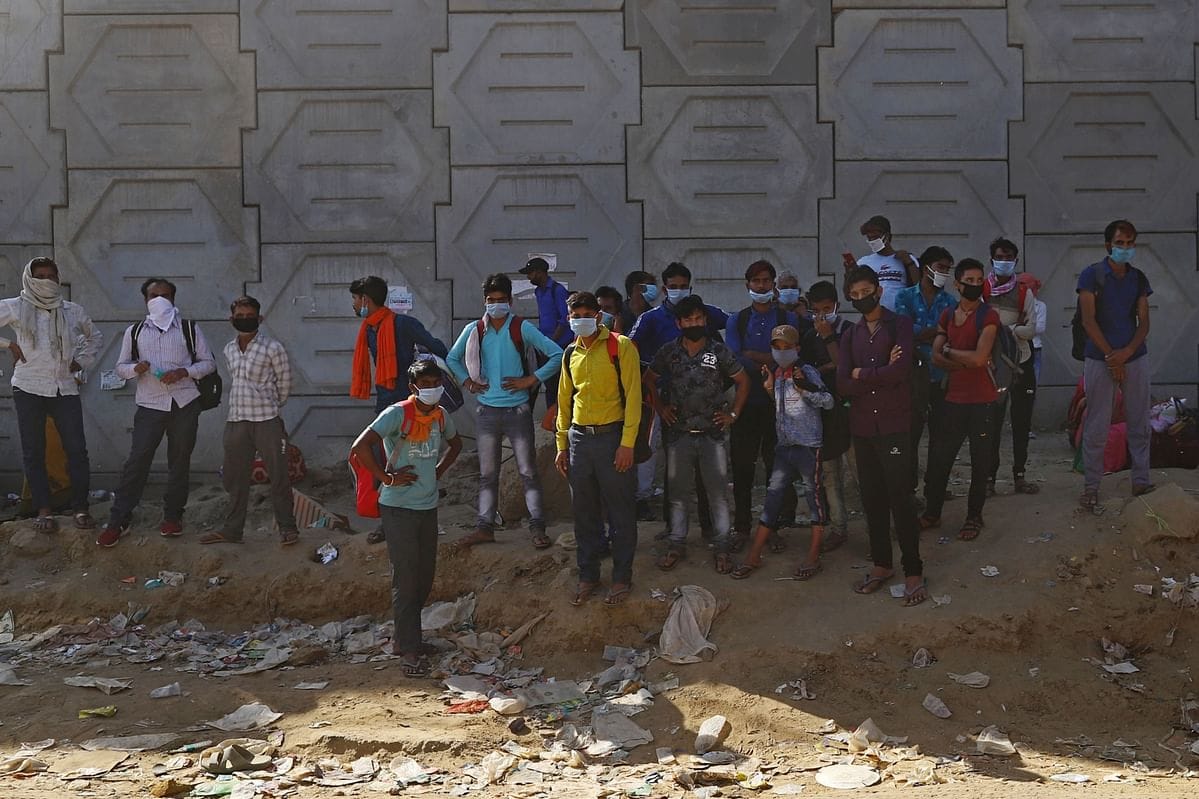[vc_row][vc_column][vc_column_text]India’s decision to implement a sudden and total lockdown amidst the Coronavirus epidemic has sent ripples across the country. This has impacted the day-to-day functioning of people and has brought everyday life to a complete standstill. As the number of patients infected with the Coronavirus continue to rise, India is amidst Lockdown 3.0 that will be extended till 17th May, 2020.
The complete lockdown has resulted in the shutting down of many factories and businesses, suspension of flights, stopping of railway operations, and imposing heavy restrictions on the movement of vehicles and people.
Effect on India’s blue-collar employees
While many sectors such as IT and ITES companies have the option to work from home amidst this crisis, this option sadly is not available for blue-collar employees that work in industries such as travel, food and beverages, hospitality, delivery, e-commerce, and aviation, all of which have taken a terrible hit since the implementation of the lockdown.
Other industries employing blue-collar workers such as shipping, construction, and production of non-essential consumer goods have also been disrupted. This has resulted in these employees, who are hired mostly on a contractual basis to earn next to nothing during the lockdown.
E-commerce and B2B companies with drivers, delivery staff, sales and business development employees, who cannot work from home due to their job profile have been issued 3-4 month severance packages and asked to leave. Even traditional sectors such as staffing agencies have also let many of their contractual employees go
For some employees, especially those in manual labor jobs, such as construction and hospitality, working at home simply isn’t an option. Many blue-collar workers have already been laid off, others will be worried whether they’ll have a job to go back to. All will certainly be feeling impacted financially. Meanwhile, other blue-collar workers such as those in healthcare, logistics, and supermarkets are in the front line. These workers might still be getting paid, but their work just became a whole lot more stressful – and even their jobs could be in danger when the coronavirus crisis ends.
What is certain is that most people in working-class jobs, whether isolated at home, or working on the front line, will be worried about the future, and what coronavirus means for their career and their financial stability.
one of India’s largest tech platforms for blue-collar workforce management, Betterplace, has launched its yearly jobs report. The total jobs lost due to COVID-19 are estimated at over 10 lakhs while the income loss is pegged at Rs 2467 crore per month.
The report, which is based on the data from the last 5 years of over 1000 companies, 20,000 pin codes, 80 lakh employees, gives insights into the ground realities, pandemic impact concluding with the path to recovery.
Here are the key findings of the report:
- Overall demand for jobs in 2020 would be 14 lakhs
- The gig economy will lead 80% of overall demand
- Demand is at 70% of 2019 levels
- Demand in Q2 2020 dropped by 80% of Q1 2020
- Q4 2020 likely to close at 90% of Q1 2020
The Betterplace Job Report 2020 indicates that as the economy is beginning its recovery, sectors like delivery and healthcare will surpass pre-COVID levels and job opportunities will see massive growth in tier 2 and 3 cities. Bangalore and the 4 metros will generate 70% of the demand of pre-COVID levels.
The paradigm & reality shift that is poised to sweep across the blue-collar ecosystem is the expectations of the job seekers and impact on their employers. The migrant workforce returning to work due to the necessity of sustaining a livelihood expects a healthy, safe & stable work environment. The visibility of guaranteed income and healthcare insurance cover is uppermost in the minds of the migrant workforce.
Pravin Agarwala, Co-founder, and CEO, Betterplace, said, “Based on our report, we are already seeing green shoots appear in demand generation in cities like Bangalore, Hyderabad, Mumbai, and Delhi. This report reinforces the fact that the jobs pipeline on the ground is robust. With the application of AI-based technology which matches skills and jobs, both the job seekers and employers will be winners. As a result, our country and economy win.”
The Betterplace Job Report 2020, also gives insights into sectors & city trends.
Demand generation:
-1/3rd of the demand for jobs will come from 3 southern states – Karnataka, Tamil Nadu and Telangana
-City wise maximum job creations will happen in Bangalore with 58,000 jobs followed by Hyderabad, Delhi, Mumbai
Migration trends:
-Bangalore and Hyderabad top destinations for job seekers -Four big states are home to over 70% of the migrants’ workforce -Reverse migration and COVID impact in Q2 – Top 5 cities from where the workforce reverse migrated – Mumbai, Bangalore, Delhi NCR, Hyderabad and Chennai
– Top 6 states from where the migrants returned – UP, Bihar, Rajasthan, MP, Jharkhand, and Odisha
Path to recovery:
-Facility management segment will close the year at 90% of Jan 2020 demand levels with close to 60,000 openings -The delivery segment will surpass Jan 2020 numbers
-On-demand driver segment was the worst hit accounting for 44% job losses
The migrant workforce is expected to return in search of jobs as the fear of pandemic subsides and the need for earnings will drive them back. The employers who would provide them with a stable, safe and healthy work environment would attract a majority of the returning crowd.
“As the report indicates that safety and health are now of paramount concerns on both sides of the aisle, the blue-collar segment will embrace digital transformation at every level – right from digital onboarding, payroll, attendance and flexible hours. Large employers have already taken a lead in this direction, we expect mid-size companies in security and facility also to embrace digitalization across their distributed workforce management verticals,” added Tandon.[/vc_column_text][/vc_column][/vc_row][vc_row][vc_column][vc_single_image image=”925″ img_size=”800*400″][/vc_column][/vc_row]




